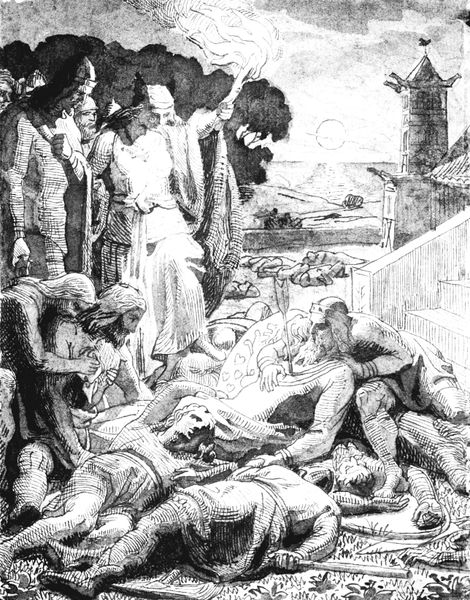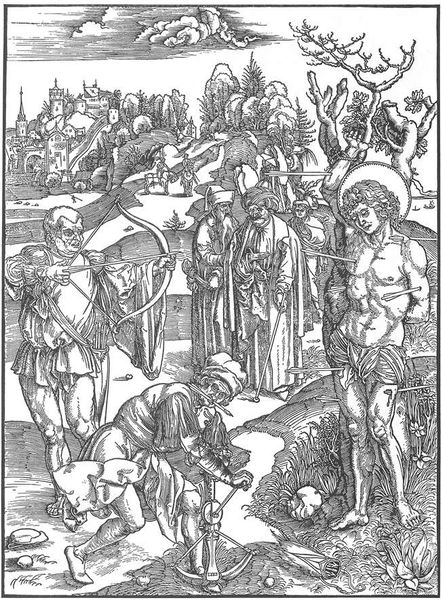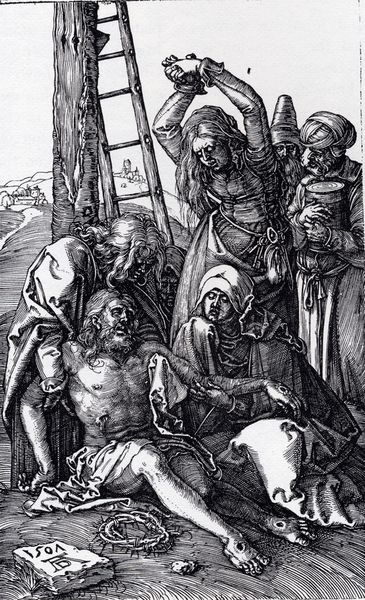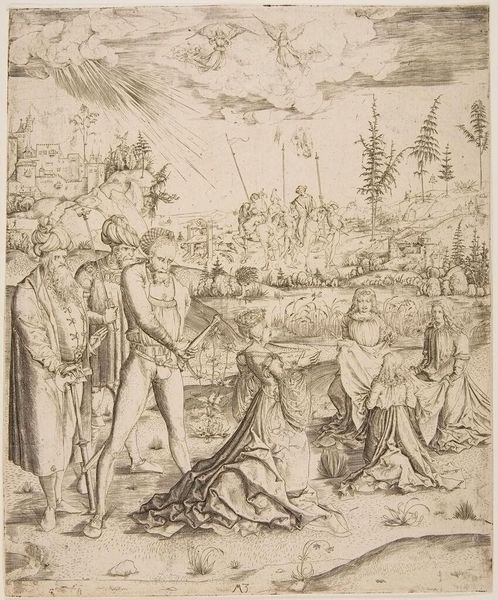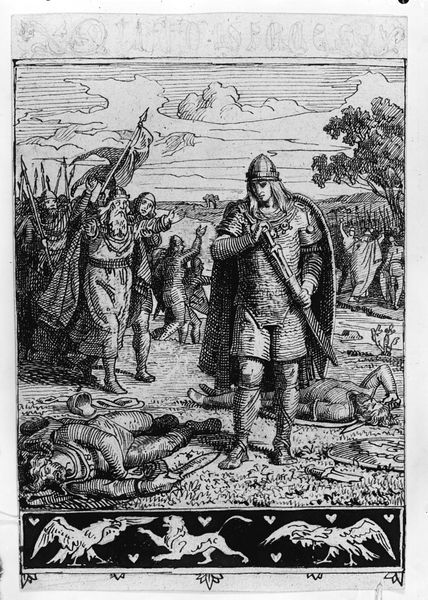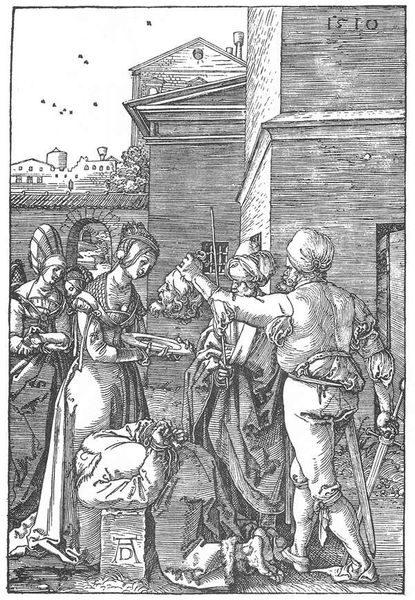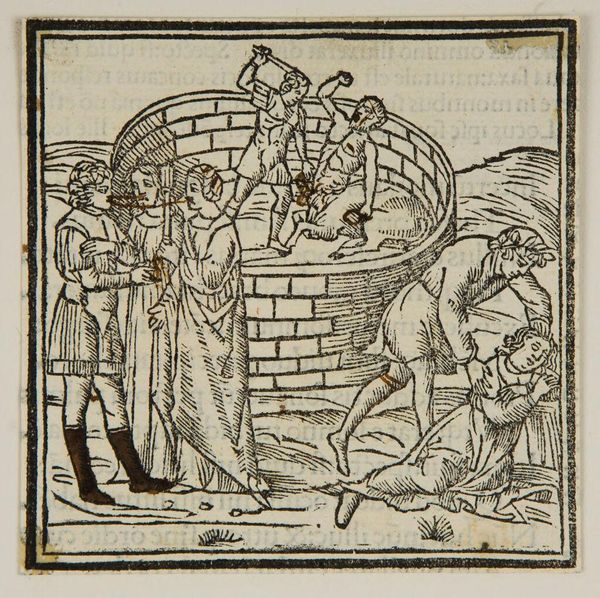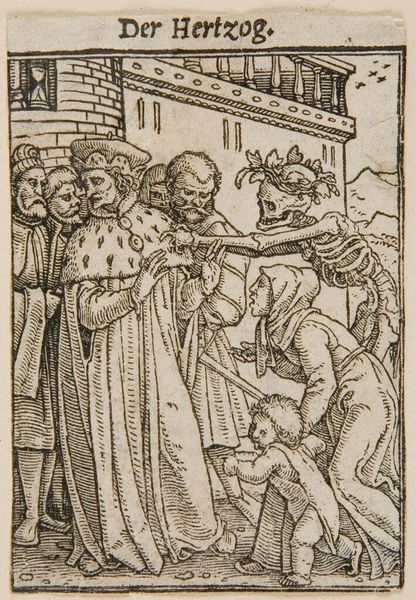
drawing, pen
#
drawing
#
comic strip sketch
#
quirky sketch
#
figuration
#
11_renaissance
#
personal sketchbook
#
idea generation sketch
#
sketchwork
#
line
#
sketchbook drawing
#
pen
#
history-painting
#
storyboard and sketchbook work
#
italian-renaissance
#
sketchbook art
#
fantasy sketch
#
initial sketch
Copyright: Public domain
Editor: Here we have Raphael’s "Study for 'The Knight's Dream'," created around 1504 using pen. It’s a rather simple drawing, but there's a distinct narrative feeling here with the sleeping knight and the two women flanking him. How do you interpret this work? Curator: What I see is Raphael engaging with the philosophical currents of his time. The knight, caught between Pleasure and Virtue, embodies the humanist struggle between earthly delights and moral obligations. Note how Raphael, even in this early study, contrasts the attire and symbolism of each woman, and even their positioning. Editor: So, you're saying the women represent opposing forces acting upon the knight's destiny? Is the landscape in the background just setting the scene? Curator: The landscape provides crucial context. On one side, we see what looks like a fortified city; on the other, something wilder, perhaps a path. What might these contrasting environments suggest about the knight's choices? Editor: Maybe the city represents stability and the wild landscape, adventure? I guess the woman next to the city wants to send the knight down a traditional path, versus the other option? Curator: Precisely. By visualizing this internal conflict, Raphael speaks to the very nature of human agency. But what about the perspective of the artist himself? Consider his patron, his audience, his social milieu—how do those factors influence his presentation of this narrative? Is he subtly championing a new type of heroism? Editor: That’s something I hadn’t considered, thinking about what Raphael himself might be advocating. Curator: Indeed, this work acts as a testament to the ability of art to hold and project dialogues around identity, morality, and societal expectations during times of cultural change. Editor: Thank you! It gives me a lot to consider.
Comments
No comments
Be the first to comment and join the conversation on the ultimate creative platform.
